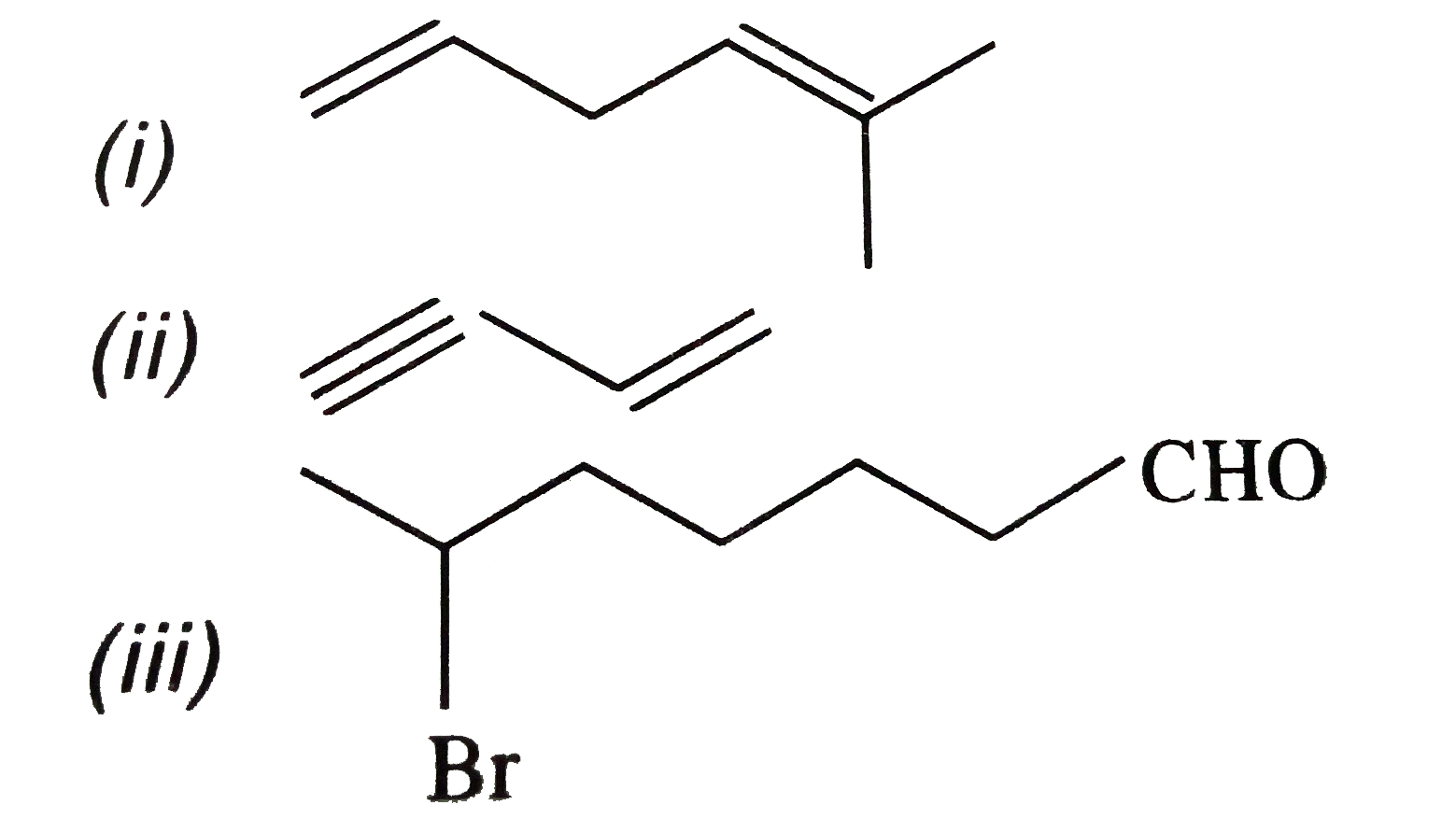Complete Solutions to ASSIGNMENT of chapter ORGANIC CHEMISTRY - SOME BASIC PRINCIPLES & TECHNIOUES of Class 11 book with complete answers and questions
| Class 11 | CHEMISTRY |
| Chapter | ORGANIC CHEMISTRY - SOME BASIC PRINCIPLES & TECHNIOUES |
| DINESH COMPANION CHEMISTRY | ASSIGNMENT |
| Number Of Questions | 34 |
| Academic Year | 2023-24 |
Name the first organic compound to be prepared in the laboratory.
01:34View SolutionWhat is the self linking property of an atom known as ?
View SolutionGive the types of the carbocylic compounds.
View SolutionCan `-NO_(2)` group act as secondary suffix ?
View SolutionIn what respect, the two successive members of a homologous series differ ?
02:16View SolutionWrite IUPAC name of an organic compound.
 01:27View Solution
01:27View SolutionWrite the structural formula of isobutyl alcohol.
01:10View Solutionwhat secondary suffix represents ketone ?
02:15View SolutionThe formula of hydrocarbon is `C_(4)H_(6)` ? To which family does it belong ?
03:48View SolutionWhich akyl groups can originate from propane ?
02:10View SolutionWrite the structure of isobutylene ?
01:36View SolutionOut of `-CHO` and `gt C = O`, which is preferred as a principal functional group ?
02:30View SolutionThe IUPAC name of the compound `CH_(2)=CH-CH(CH_(3))_(2)` is
01:49View SolutionGive the IUPAC name of the hydrocarbon represented by Swastik sign.
01:35View SolutionRepresent but-2-ene by bond line notation.
01:25View SolutionWhat is meant by L.P.G. ?
01:55View SolutionDefine a functional group.
02:45View SolutionWhich heteroatom is present in pyrrole ?
01:40View SolutionPick out the error and write correct IUPAC name of pent-3-yne.
01:46View SolutionWhat are open chain compounds ? Give two examples.
02:42View SolutionBoth ethene and ethyne are unsaturated hydrocarbons. Explain on the basis of concept of hybridisation.
04:04View SolutionGive the IUPAC names of the following :
(i) `CH_(3)-CH=CH-CH=CH_(2)`
(ii) `CH_(3)-CH_(2)-CHO`
(iii) `CH-overset(O)overset(||)(C)-CH_(2)-CH_(3)`02:25View SolutionHow is an alkyl group represented ? Give the structures and the names of the alkyl agroups which originate from (i) n-butane (ii) isobutane.
04:39View SolutionGiev the IUPAC names of :
(i) `{:(CH_(3)-CH-C-CH-CH_(3)),(" |"" ||"" |"),(" "Br" "O" "CH_(3)):}`
(ii) `{:(CH_(3)-CH-C-CH-CH_(3)),(" |"" ||"" |"),(" "NO_(2)" "O" "CH_(3)):}`
(iii) `(CH_(3))_(3)C-CH_(2)-CH_(2)-Cl`
(iv) `{:(CH_(3)-CH-CH_(2)-CH_(3)),(" |"),(" "Br):}`04:02View SolutionWrite the structures of the following :
(i) Acetone (ii) Ethylene glycol
(iii) Sec-butyl alcohol.01:45View SolutionGive the structures of the following aromatic compounds:
(i) p-Toluidine (ii) p-cresol
(iii) T.N.T. (iv) Benzophenone.02:33View SolutionWrite the structures of the following compounds :
(i) But-2-enoic acid
(ii) But-1-en-3-yne
(iii) 3, 4, 4-Trimethylhex-1-yne02:25View SolutionWrite the IUPAC names of the following :
 02:46View Solution
02:46View SolutionWrite the IUPAC names of the following :
(i) `{:(" "C_(2)H_(5)" "C_(2)H_(5)),(" |"" |"),(CH_(3)-C-CH_(2)-C-CH_(3)),(" |"" |"),(" "NO_(2)" "I):}`
(ii) `{:(" "F" "Cl),(" |"" |"),(CH_(3)-C-CH_(2)-C-CH_(3)),(" |"" |"),(" "C_(2)H_(5)" "C_(2)H_(5)):}`03:56View SolutionWrite the IUPAC names of the following compounds :
(i) `C_(6)H_(5)CH_(2)CH_(2)OH` (ii) `(CH_(3))_(2)CHC equiv CH`
(iii) `(CH_(3))_(2)CHCH_(2)CHO`
(iv) `BrCH_(2)CH_(2)CH_(2)Cl`
(v) `CH_(3)-CH_(2)-underset(Br)underset(|)overset(CH_(3))overset(|)(C)-underset(Br)underset(|)(CH)-CH_(2)-Cl`
(vi) `CH_(2)=CH-C equiv N`
(vii) `CH_(3)CH=CHCH_(2)NH_(2)`
(viii) `CH_(3)CH=CHCOOH`
(ix) `CH_(3)O-CH(CH_(3))_(2)`
(x) `(C_(2)H_(5))_(2)CH.CH_(2)OH`View SolutionWrite the compounds formula and IUPAC names of the following compounds known by their common names :
(i) Neopentane (ii) Vinyl chloride
(iii) Glycerol (iv) Tert-amyl alcohol.03:49View SolutionWrite the structures of the following :
(i) But-2-en-1-ol
(ii) 2-Aminoethan-1-ol
(iii) 2, 4-Dimethylhexan-3-one
(iv) 1, 3-Diaminopropane
(v) 4-Ethyl-2, 4-dimethylhexane
(vi) 5-(1, 2-Dimethylpropyl) nonane.05:06View SolutionWhich of the following represented the correct IUPAC names for the compounds concerned ?
(a) 2, 2-Dichloropentane or 2-Dichloropentane
(b) 2, 3-Dimethylpentane or 3, 4-Dimethylpentane
(c) 2-Bromo-4-methylpentane or
4-Bromo-2-methylpentane
(d) But-3-en-1-ol or But-4-ol-1-ene.05:35View SolutionWrite bond line notation formulae for
(i) Tert-butylcyclohexane
(ii) Hexan-3-one
(iii) Isopropyl chloride
(iv) 2-Methylcyclopentanone
(v) 3, 3-Dimethylpentan-2-one
(vi) Cyclobuta-1, 3-diene.04:51View Solution
ASSIGNMENT questions and complete solutions for chapter ORGANIC CHEMISTRY - SOME BASIC PRINCIPLES & TECHNIOUES of S DINESH & CO CHEMISTRY (HINGLISH) of Class 11
All Exercises from DINESH COMPANION CHEMISTRY Class 11 CHEMISTRY ORGANIC CHEMISTRY - SOME BASIC PRINCIPLES & TECHNIOUES
- Assertion-Reason
- ASSIGNMENT
- CONCEPT BASED QUESTION
- Detection & Estimation of Organic Compounds
- Example
- Matching Type
- MCQB
- MCQS
- N.C.E.R.T.
- NCERT Exemplar Problems
- Problems For Practice
- PURIFICATION & CHARACTERISATION OF ORGANIC COMPOUNDS
- Purification of Organic Compounds
- SHORT ANSWER TYPE QUESTION
- Some Basic Principles in Organic Chemistry
- VALUE BASED QUESTION
